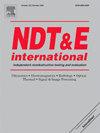基于复合材料正演模拟的沥青路面介电常数数据驱动反演模型
IF 4.1
2区 材料科学
Q1 MATERIALS SCIENCE, CHARACTERIZATION & TESTING
引用次数: 0
摘要
利用探地雷达对新建沥青路面进行无损密度检测的关键在于介电常数的测量。基于深度学习的介电常数反演可以显著提高密度监测的实时性和效率。本文提出了一种新的路面介电常数反演网络(NPDCI-Net),该网络利用编码器-解码器架构对a扫描信号进行实时反演。NPDCI-Net集成了增强的门控注意机制和多尺度融合模块,便于特征提取。考虑材料组成和结构特征的正演模拟用于生成观测信号并构建综合训练数据集。利用优化后的理论模型,计算出复合材料数值模型对应的真介电常数曲线。烧蚀实验和测试结果表明,由于有效地引入和修改了门控注意层和多尺度融合模块,NPDCI-Net模型优于其他经典和最先进的模型。与其他模型相比,NPDCI-Net对沥青混合料复合特性引起的随机噪声和振幅振荡具有显著的抵抗能力。最后,采用专门设计的连续设备采集两条不同测量线的观测信号。基于电磁混合理论,NPDCI-Net的介电常数结果通过与路面岩心样品的密度对比,实现了准确的密度预测。本文章由计算机程序翻译,如有差异,请以英文原文为准。
Data-driven inversion model of asphalt pavement dielectric constant based on the forward simulation of composite materials
The key to non-destructive density detection of newly constructed asphalt pavements using ground penetrating radar lies in measuring the dielectric constant. Deep learning-based dielectric constant inversion can significantly enhance the real-time performance and efficiency of density monitoring. This study presents a new pavement dielectric constant inversion network (NPDCI-Net), which utilizes an encoder-decoder architecture to perform real-time inversion of A-scan signals. The NPDCI-Net integrates an enhanced gated attention mechanism and a multi-scale fusion module to facilitate feature extraction. Forward simulations, accounting for material composition and structural characteristics, were applied to generate observation signals and construct a comprehensive training dataset. An optimized theoretical model was utilized to calculate the true dielectric constant curves of composite material numerical models corresponding to the signals. Ablation experiments and test results revealed that the NPDCI-Net outperformed other classic and state-of-the-art models due to the effective introductions and modifications of the gated attention layers and multi-scale fusion module. Compared with other models, NPDCI-Net demonstrated significant resistance to random noise and amplitude oscillations caused by the composite characteristics of asphalt mixtures. Finally, specially designed continuous equipment was employed to collect the observed signals from two different survey lines. Based on the electromagnetic mixing theory, NPDCI-Net's dielectric constant outcomes enabled accurate density prediction by comparing with the density of pavement core samples.
求助全文
通过发布文献求助,成功后即可免费获取论文全文。
去求助
来源期刊

Ndt & E International
工程技术-材料科学:表征与测试
CiteScore
7.20
自引率
9.50%
发文量
121
审稿时长
55 days
期刊介绍:
NDT&E international publishes peer-reviewed results of original research and development in all categories of the fields of nondestructive testing and evaluation including ultrasonics, electromagnetics, radiography, optical and thermal methods. In addition to traditional NDE topics, the emerging technology area of inspection of civil structures and materials is also emphasized. The journal publishes original papers on research and development of new inspection techniques and methods, as well as on novel and innovative applications of established methods. Papers on NDE sensors and their applications both for inspection and process control, as well as papers describing novel NDE systems for structural health monitoring and their performance in industrial settings are also considered. Other regular features include international news, new equipment and a calendar of forthcoming worldwide meetings. This journal is listed in Current Contents.
 求助内容:
求助内容: 应助结果提醒方式:
应助结果提醒方式:


